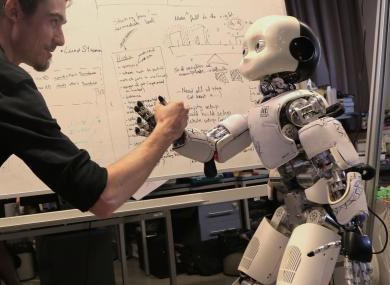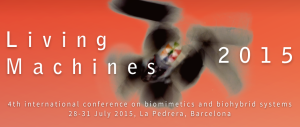The EU project – What You Say Is What You Did – studies how to teach robots to build a narrative self and communicate with humans!
Personal robots in homes and their integration in everyday life will be a major breakthrough of the 21st century. Yet, to realize this vision, important obstacles need to be overcome: these robots will have to act in unpredictable environments including homes and learn new skills while interacting with humans. Intelligent artifacts and robots are expected to operate in complex physical and social environments. The deployment of service and companion robots, however, requires that humans and robots can understand each other and can communicate. The goal of the Eu project WYSIWYD is to be able to contribute to a qualitative change in human-robot interaction and cooperation (HRI) and scientists are working towards advancing a robot’s ability to engage in communicative behaviours with humans.
The goal of the Eu project WYSIWYD is to be able to contribute to a qualitative change in human-robot interaction and cooperation (HRI) and scientists are working towards advancing a robot’s ability to engage in communicative behaviours with humans.
By allowing robots to both understand their own actions and those of humans, will unable the interpretation and communication of the robot “understanding” into human compatible intentional terms. This is expressed as a language-like communication channel called “WYSIWYD Robotese” (WR). The WYSIWYD project will advance this critical communication channel following a biologically and psychologically grounded developmental perspective allowing the robot to acquire, retain and express WR dependent on its individual interaction history or “narrative”.
An integrated architecture to improve communication in HRI
To achieve transparency and communication in HRI a number of elements must be put in place: a well defined experimental paradigm, an integrated architecture for perception, cognition, action and intrinsic motivation that, among other things, provides the backbone for the acquisition of an autonomous communication structure, the WR-DAC architecture
WYSIWYD aims to contribute to a qualitative change in human-robot interaction (HRI) and cooperation, unlocking new capabilities and application areas together with enhanced safety, robustness and monitoring.
Project reviewed with excellence !
The Eu project WYSIWYD, coordinated by ICREA Prof. Paul Verschure director of the SPECS lab at UPF, has reached its 2nd year with a very positive report by the Eu project reviewers and has passed its 2nd review with excellent!
The yearly review meeting took place on the 19th of March and was hosted by the INSERM group in Lyon. for more information on the project and more recent video see http://wysiwyd.upf.edu/








 “We are coming to an era where one of the most urgent challenges in neuroscience is the problem of large scale integration”.
“We are coming to an era where one of the most urgent challenges in neuroscience is the problem of large scale integration”.